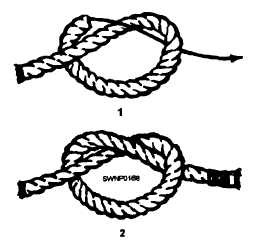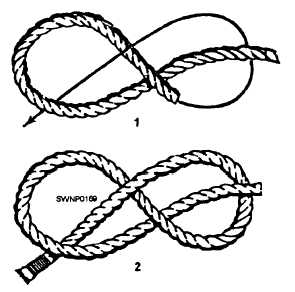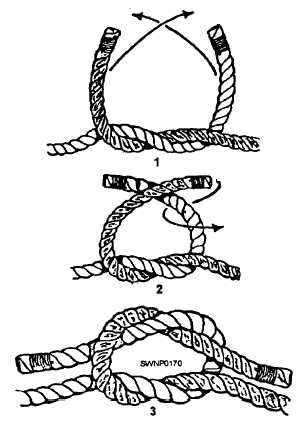
Figure 4-9. - Overhand knot.
Figure-Eight Knot
The FIGURE-EIGHT KNOT is used to form a larger knot than would be formed by an overhand knot in the end of a line (fig. 4-10). A figure-eight knot is used in the end of a line to prevent the end from slipping through a fastening or loop in another line. To make the figure-eight knot, make a loop in the standing part, pass the running end around the standing part, back over one side of the loop and down through the loop, and pull tight.
Square Knot
The SQUARE KNOT, also called the REEF KNOT, is an ideal selection for tying two lines of the same size together so they will not slip. To tie a square knot, first bring the two ends of the line together and make an overhand knot. Then form another overhand knot in the opposite direction, as shown in figure 4-11.
NOTE:
A good rule to follow for a square knot is left over right and right over left.
When tying a square knot, make sure the two overhand knots are parallel. 'his means that each running end must come out parallel to the standing part of its own line. If your knot fails to meet this test, you have tied what is known as a "granny." A granny knot should NEVER be used; it is unsafe because it will slip under strain. A true square knot instead of slipping under strain will only draw tighter.
Sheepshank
The SHEEPSHANK is generally thought of as merely a means to shorten a line, but, in an emergency, it can also be used to take the load off a weak spot in the line. To make a sheepshank, form two bights

Figure 4-10. - Figure-eight knot

Figure 4-11. - Square knot.
Continue Reading